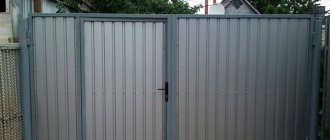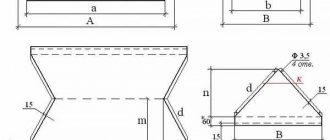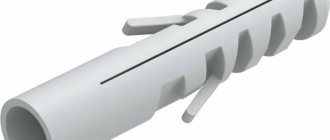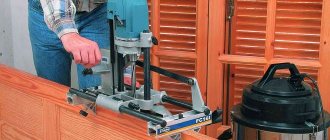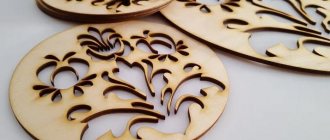Many of those who have had to deal with straightening car body parts know firsthand what spotters are and how convenient they are when performing such work. These devices got their name from the English phrase spot welding, which means “spot welding”. The spotter uses one of the varieties of this technology - one-sided spot welding, which does not require access to the back side of the part. Therefore, a spotter is used for straightening and upsetting defects in body elements to which two-way access is impossible or difficult.
The spotter consists of a pulse-controlled welding machine and a hand-held device, which is commonly called a gun. It is equipped with various attachments, which allows them to perform various types of work: spot welding, mechanical drawing and metal annealing. In its most general form, the technology for straightening a body part using a spotter looks like this: special fasteners (rings, studs, etc.) are welded to a dent in the metal, then the body metal is pulled upward using a mechanical device, after which the fasteners are removed.
What is a spotter and how does it work?
Spot welding is used to connect parts made of thin sheet metal to each other, as well as to fix various fastening and supporting elements on them. Welding is carried out with a short and powerful current pulse. This ensures that the metal sheet does not penetrate to the full depth and thus avoids damage to its surface on the reverse side. Therefore, the power sources of many spotters have an open circuit voltage of 6÷8 V, a welding voltage of 1.5÷2 V and a pulse current of the order of 2500÷3000 A, which allows welding on a metal sheet with a thickness of 0.5 to 1.5 mm.
This apparatus for straightening body parts includes five main components (see figure below):
- power supply with a relay or electronic control and regulation unit;
- welding cable with control wires;
- ground cable with plate;
- a gun with terminals for connecting the power and control circuits and a threaded connection for electrodes;
- set of electrodes, accessories and consumables.
The design and operating principle of the spotter is based on the technology of pulling out dents in sheet metal using fasteners welded to its surface by spot welding. In this case, the gun simultaneously performs two functions: welding fasteners and creating a pulling force.
Straightening using a spotter occurs in the following order:
- Cleaning the dent surface.
- Welding outside the working area of the ground cable plate.
- Installing an electrode into the gun and clamping fasteners into it (ring, nail).
- Welding fasteners to the exhaust area with a short pulse.
- Pulling out a dent in a body part manually or using devices.
- Boiling fasteners from the metal surface.
Various devices are used with the spotter: reverse hammers, hooks, combs, etc.
Spot welding machine design
All types of spotters are characterized by a general design diagram:
- Any model of spot welding for straightening a car body has a power supply that can operate on both alternating and direct current.
- The ground wire and cable are connected to the main unit.
- At the free end of the cable there is an elongated welding gun. It is the shape of the tool that provides excellent access to the most difficult places to work.
- Various attachments are attached to the end of the gun.
- On the front side of the case there are buttons and controls for controlling the device. On the panel you can find regulators of welding modes, a current control module, and a screen on which the operating parameters of the structure are displayed.
To start working directly, you need to remove the battery from the machine. Fix the grounding wire to the body. The device is connected to the network.
A gun with a ready-made nozzle is brought to the point of damage. In this case, the material is straightened directly at the point of impact of the spot welding contacts.
Another option for the impact of the tool is to weld a metal part to the surface of the body, using which the damaged metal sheet is subsequently pulled out (if it is impossible to use the main method).
Purpose and scope of equipment
Spotters are standard equipment for car repair shops, as their use significantly saves time and reduces labor costs when straightening body parts with one-way access.
In addition, they are used for upsetting metal by pulse heating. Another area of application for spotters is double-sided welding. In this case, instead of a gun, special welding pliers are used. One of the important features of this welding equipment is low power consumption; The PV parameter (on duration) for such devices does not exceed 5%. Many home craftsmen involved in car body repairs make their own spotters from scrap materials (mostly based on old transformers). In such devices, most often there is no electronic control unit, and the welding pulse is generated manually by pressing the power off button. As a rule, they also do not have current adjustment, so the selection of welding modes is done experimentally. Craftsmen usually make pistols and reverse hammers with their own hands, and purchase consumable fasteners in specialized stores. Nevertheless, with the help of such devices, various types of straightening are quite successfully performed.
Design and principle of operation
Spotter welding is actively used in many service stations. Its main purpose is to level damaged surface elements, returning geometric shapes to their original state. This device has all kinds of attachments and modes that allow you to “treat” the problem area in such a way that the final result will be similar to the factory appearance. Often, a spotter is used to straighten car body elements:
- wings;
- threshold;
- doors;
- hood;
- roofs.
The device consists of a welding machine. It can output direct or alternating current. Spotters can be professional, moved on wheels, or compact, to be carried in the hand. On the front side there is a panel with settings. On all models you can set power and current. A series of buttons or a toggle switch indicating modes must be installed.
Two cables come from the body of the device: ground and a working wire with a gun. The gun is what the welder operates in his hands. At the end of the device there is a fastening element in which the following are fixed:
- reverse hammer;
- hook;
- electrodes;
- reverse suction cup;
- adapters for different types of welding (washers, wire).
Welding with the machine is a contact type and is carried out by closing the circuit. The mass is fixed to the car body from which the battery has been previously removed. The trigger on the gun starts the current flow. A washer, hook, or other attachment is installed in the lock at the end of the gun. When voltage is passed, the place that is least connected (the surfaces to be welded) begins to heat up. Due to the increasing resistance, the metal melts in a minimal zone, sufficient to weld the element, but not overheating the structure as a whole. It turns out that the product is stuck by contact.
Types of spotters
As a rule, spotters are classified according to the type of power source, weight and size indicators and functionality, as well as power and standard operating time. In the first case, they are divided into transformer and inverter. Transformer ones are available in both manual and stationary versions, while inverter ones are available only in stationary versions. The functionality of the spotter largely depends on the type of power source and its power, which determines the maximum thickness of the products being welded. For example, manual machines are intended only for welding fastening nails in fixed modes. At the same time, professional stationary inverter spotters can perform both types of spot welding (gun and pliers), as well as annealing with carbon electrodes. In addition, the inverter allows you to generate current pulses of any shape and duration, which is very important when working on thin-sheet products made of various metals and alloys.
Methods of working with a spotter
The principle of operation of the device for straightening dents in those places of the body, which cannot be approached from the reverse side without serious disassembly of the upholstery or structures and components of the car, is based on pulling out the dented area of the surface by a temporarily welded fastener - a mounting washer or a metal rod. The force created by the reverse hammer is directed from the inside of the body to the outside of the dented surface, simulating blows with a mallet from an inaccessible place.
Do-it-yourself spotter at work
The technological process can be divided into the following operations:
- Remove paint, soil and dirt from the center of the dented area of the body - it must be stripped down to bare metal.
- Connect the ground of the spotter to the car body. The vehicle battery must be disconnected and the ignition turned off to avoid damage to electrical equipment from welding current pulses.
- Spot weld the fasteners to the center of the dent.
- Straighten out the dent by pulling out the metal by the fastener.
- Using a twisting motion, remove the fasteners from the leveled surface.
- Clean the place where the washer or electrode is attached and prepare the body element for painting.
To work with a spotter, store-bought or home-made, the master will only need general welding and plumbing skills. It is necessary to comply with industrial safety requirements in order to avoid harm to human life and health and damage to material assets.
How to work as a spotter
Working as a spotter does not require special training, but in order to become a real specialist, you still need certain qualifications in working with car body parts. The behavior of the metal depends on the size, depth and nature of the deformation. Therefore, before starting straightening, it is necessary to correctly determine what needs to be done and what method will be used to straighten the dent on the body part. And only after that the appropriate fastening materials are selected. The following is used as a welded fastener to which a pulling force is applied:
- cylindrical nails;
- triangular washers;
- rings;
- rivets;
- wavy wire.
Each of these elements corresponds to its own type of replaceable electrodes, which are attached to the end, a gun and its own type of equipment (hooks, clamps, combs, cartridges, return hammers) with which they are pulled. There are many types of electrodes for spotters, and the most common types are designed for welding:
- corrugated wire;
- screw studs;
- rivets;
- round washers;
- nuts;
- using a reverse hammer;
- nails
In addition, copper and carbon electrodes can be used with the spotter, which makes it possible to perform the reverse operation of pulling: annealing and deposition of bulges on the body parts of the car (the so-called flappers).
With sequential point pulling, straightening is used with a spotter with a triangular washer and a reverse hammer, which allows you to carefully and without much effort pull out the metal at the welding site. If the defect has a large extent, then first one or two rows of rings or corrugated wire are welded along the entire length. The extraction is carried out using a comb with rows of hooks. This provides simultaneous pulling force on 5–10 wire rings or protrusions. After the extraction is completed, all elements are boiled using the same electrodes that were used when installing them.
Functionality of serial model spotters
Before designing and making a spotter with your own hands, it will be useful to study the functionality of industrial models. They do:
- welding of repair washers;
- welding of a rod that straightens dents with a rod;
- heating the metal for its precipitation using graphite electrodes;
- ventilation and overheating protection system with activation after cooling.
- switching between continuous operation for heating and short-term operation for welding
The devices from the store are reliable and easy to use and maintain. Special training for the operator of such a device is not required; general welding and plumbing skills are sufficient.
How to choose equipment
When choosing a specific spotter model, first of all, it is necessary to answer the question: why is this equipment purchased and what types of work are it supposed to perform. Not only the indicators of power, controllability, weight and dimensions, but also its price depend on the functionality of the device. For example, the simplest manual spotter for welding nails can cost 6–7 thousand rubles, and the price of an inverter unit with the ability to work with various non-ferrous metals, double-sided welding of sheets more than 1.5 mm thick and a wide range of adjustable parameters can reach 80–90 thousand . rubles. Important criteria are the type of supply network (three- or single-phase), as well as the dimensions of the installation and the length of the cables. For a small car service with several repair stations, a device with the following characteristics is quite suitable:
- single-phase network 220 V;
- power - 2.5÷3 kW;
- pulse current - 2500÷3000 A;
- power adjustment;
- weight - 12÷15 kg.
Such a model, depending on additional functions, can cost from 25 to 30 thousand rubles, which is not prohibitive for small businesses.
Characteristics of commercially produced spotters
The main characteristics are as follows:
- Power supply parameters - 220 V 50 Hz.
- Power consumption - up to 10 kilowatts.
- Peak welding current - 1300 A.
- The voltage in the operating circuit is from 7 to 10 V.
- The pulse duration set by the timer is from 0 to 1.2 seconds.
- Switching between welding and heating modes.
- Traction force using a metal electrode is up to 100 kg.
- The same for the mounting washer - more than 100 kg.
These parameters can also serve as a guide for devices assembled by yourself.
Main manufacturers and models
Spotters are specialized equipment, so compared to other welding machines on the market, they are represented by a much smaller number of models.
Perhaps the most famous among them are the Italian Telwin and the German Garwin and Nordeberg. All these companies produce quite expensive inverter models with the widest range of functionality. The rest of the range is represented by well-known and little-known brands that produce their equipment in China. Among them we can note the German brand Fubag, which produces a variety of welding equipment with a good reputation. In articles about spotters, there are sometimes statements that in spot welding mode you can use welding inverters with manual mode (MMA). Considering the difference in open circuit voltages (even taking into account the possibility of regulation), this looks rather doubtful. What do you think about this? Please share your opinion in the comments.
Scheme for assembling a homemade spotter
To assemble a homemade spotter with your own hands, comparable in functionality and characteristics to a purchased one, you will need skills in the field of electrical installation and plumbing. You will also need knowledge in the field of circuit design to read and implement the electrical circuit of the spotter
The spotter circuit is not too complicated, from it you can understand that the main unit of the device will be a powerful welding transformer, the primary winding of which is powered from the network through a diode bridge.
220 volts are stepped down on a small transformer and supplied to the second diode bridge, then through the closed contact of the selector that controls the pulse to a large-capacity electrolytic capacitor, which begins charging. While the thyristor is still closed, it does not pass current to the working transformer. When the supply selector is switched, the voltage from the capacitor through a variable resistor is supplied to the thyristor, opening it. The opening time is determined by the value of the resistor.
Spotter control circuit
Schematic diagram of a spotter
The thyristor connects the main transformer to the network, the secondary winding of which delivers a powerful impulse to the electrode with a current of up to 500 A and a duration of 0.1 to 0.5 seconds, which is regulated by a resistor. After the capacitor is discharged, the thyristor closes and the operating circuit is broken. After the switch returns to its initial state, the device is ready for the next operating cycle.
It will not be possible to independently assemble the electronic part of an inverter spotter at home, but it is possible to assemble a spotter from an inverter by taking a working inverter unit.
What it is?
To understand how this device works, you first need to know what a spotter is. It is a kind of lightweight version of a welding machine that is used for spot welding. In most cases, this technology is useful for straightening, that is, leveling mechanically bent places on cars.
Thus, a spotter helps parts regain their original geometric shape and is mainly used for:
- hoods;
- doors;
- roofs;
- wings, etc.
Both minor defects and complex collision damage can be processed.
Using a spotter you can straighten dents of almost any complexity



